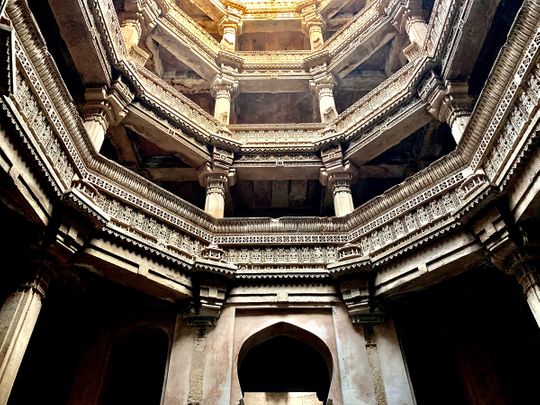
You’ve likely seen memorials and monuments around the world that were built in honour of someone beloved. But how many of them were made by women?
Click start to play today’s Spell It, where we discover ‘palatial’ monuments, all commissioned by women.
From India’s Taj Mahal to Italy’s Torrechiara Castle, men around the world have famously constructed tributes to their beloved. But women throughout history haven’t held back, either. When they decided to construct a sculpture or a tomb, they had to overcome a number of challenges to do so, whether it was to break a royal custom or shift architectural trends.
Here are a few sites from around the world, where women dared to memorialise their love, according to a February 2023 report in National Geographic:
1. The Royal Mausoleum, England
When UK’s Prince Albert died suddenly, at age 42, from an illness in 1861, Queen Victoria was inconsolable. She grieved deeply, and often sought solace by commissioning statues and memorials in his memory. The most significant was a mausoleum at Frogmore, a royal estate near Windsor Castle in the UK. Prince Albert was laid to rest there, and in a break from tradition, Queen Victoria was buried next to him in 1901, instead of being interred at Westminster Abbey or St. George’s Chapel in Windsor. The mausoleum is not open to tourists, but can be viewed from the adjacent Frogmore House. The stately building’s interiors are inspired by Prince Albert’s love for Italian Renaissance art, and right in the centre is an impressive sarcophagus topped by marble effigies of the queen and her beloved.
2. Kodai-ji Temple, Japan
In the foothills of Higashiyama Mountains, in Kyoto, Japan, is a graceful temple. It’s one of Kyoto’s most visited temples and is dedicated to Toyotomi Hideyoshi, the son of a peasant who rose to become a samurai and who helped unify Japan. Commissioned by his grieving wife, Kita-no-Mandokoro (also known as Nene), after his passing in 1598, the temple was where Nene stayed as a widowed Buddhist nun for 19 years, and where her grave is located. The two were known to be devoted to one another and remained together for about 37 years until Hideyoshi’s death.
3. Humayun’s Tomb, India
A marble and red sandstone monument that’s testament to the love between an emperor and his devoted wife, Humayun’s Tomb served as the inspiration for the Taj Mahal. As the ruler of the Mughal dynasty of India, Humayun died from a fall in 1556, at age 47. His first wife, Bega Begum, commissioned the tomb in his honour. It was the first large building made in a Mughal architectural style, with a blend of Indian, Persian and Central Asian design elements. For as long as she was alive, Begum took it upon herself to look after the tomb with patient devotion.
4. Mausoleum of Halicarnassus, Turkey
As one of the Seven Wonders of the Ancient World, the Mausoleum of Halicarnassus rivaled Egypt’s pyramids in size and splendour, and today, it’s about 2,300 years old. Roman author Pliny the Elder wrote that the mausoleum was commissioned by Queen Artemisia in 353BC, as a grand gesture for her partner, Mausolus, the ruler of Caria (a territory of modern-day Turkey). In artwork from the Renaissance, Artemisia is often depicted supervising the tomb’s construction.
5. Rani-ki-Vav Stepwell, India
Another famous monument in India lies on the outskirts of Patan, in western India. There, the earth drops off into an intricate wonder. Tourists can descend more than 65 feet via a series of staircases, past four pavilions and 1,500 hand-carved sculptures, into Rani-ki-Vav Stepwell. Stepwells were common in India, and were once used to collect water for drinking, bathing and washing, but British colonial forces destroyed most of them. This beautiful remnant of a lost time, however, was commissioned in the 11th century by Queen Udaymati, and extensively restored in the 1980s. She dedicated it to her late husband, King Bhimdev I, who ruled most of what is now Gujarat, in India.
What do you think of these tributes made by women? Play today’s Spell It and tell us at games@gulfnews.com.








